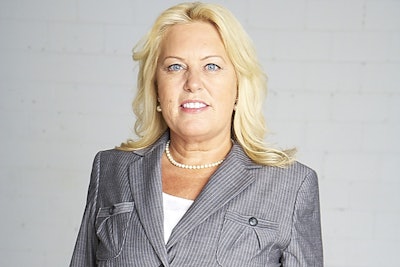
Gillian Hoff is the vice president of special events for Design Exchange, Canada’s national design museum located in the original Toronto Stock Exchange building. She produces some 400 events a year, including fund-raisers, fashion shows, exhibit openings, and the annual DX Intersection gala.
1. Find something that you are passionate about and work in that field. I often suggest that people try volunteering to get their foot in the door. It is very easy for me to stay motivated working for a museum/not-for-profit; I am extremely passionate about charity work and making a difference. And by working in a design environment, every event I work on is unique and interesting, and I am always inventing a new way to engage an audience.
2. Create “work-back schedules.” I create them months out from an event to outline roles, responsibilities, and deadlines. One week before an event, I create a daily schedule to follow. This is an invaluable tool that can be shared with all staff and suppliers. Always list contact numbers and emergency numbers on the schedule.
3. Turn off your cell phone. I always turn mine off or on vibrate at meetings. Clients do not appreciate constant interruptions; it shows a lack of attention. If you are waiting for an important call or email, inform your client when starting the meeting. This rule also applies to staff working events—if you need to communicate with your staff, have their phones on vibrate and out of your guests’ view.
4. Always look for the latest technology. My favorite element to work with is video projection mapping. It is a fairly new projection technique that can turn almost any surface into a dynamic video display. Specialized software is used to warp and mask the projected image to make it fit perfectly on irregularly shaped surfaces. I work in a heritage building with some amazing architecture, and by using 3-D mapping we manage to bring it to life.
5. Hire at least one professional photographer for an event. I focus on two perspectives: one of the room before the event starts, and one during the event. Right before the doors open I clear the floor of staff, set the lighting, and give my photographer a list of shots I want taken or want to emphasize (this should include sponsorship shots). I also provide headshots of notable guests that should be photographed for media coverage.
6. Take risks. Make the impossible possible. Sometimes you have to take risks to be successful and set yourself apart from other event designers. I am fortunate to work with a great team and suppliers that will always go above and beyond to work with my visions while still being realistic and keeping my feet on the ground.
7. Never show stress. CareerCast’s annual list of the 10 most stressful jobs recently rated event planning as number five! It is inevitable that sometimes something will not go as planned. Always remain cool and collected, show confidence, and do not give any indication that anything is wrong. Keep a smile on your face while coming up with a solution and keeping up your event-side manner.
8. Meet with your core team and event committee post-event. Try to do this as soon as possible so people’s memories are still fresh. Create an agenda to circulate at the meeting to evaluate what worked and did not work. It is a great way to hear from your staff about the successes and to plan for future improvement or things to avoid.
9. Say thank you! Working for a not-for-profit, we receive a fair amount of sponsorship from our suppliers. I cannot say enough how important it is to say thank you again and again. I like to personally call after an event. I always follow up with letters and emails with photographs and links to media coverage for their use.



















